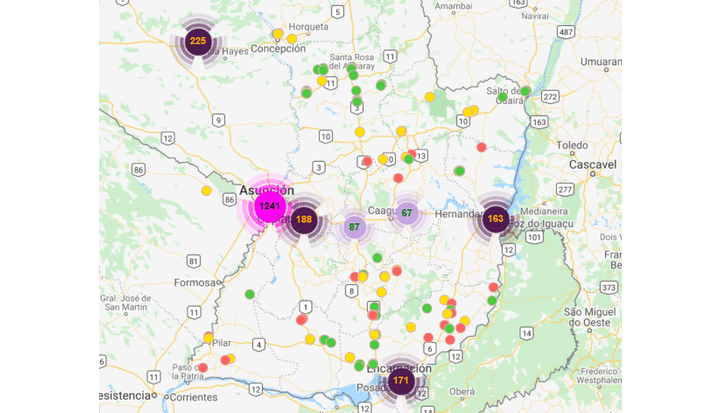Most of you would probably answer that environmental protection is very important. Now, consider the following question: What actions do you take for protecting the environment?
Discussions on how to address climate change often present disparate views. On the one hand, some argue that actions at the individual level – such as reducing the use of plastics or saving energy and water – will help to tackle climate change, and on the other, there are arguments that such actions are futile, as governments and companies hold most of the power when it comes to deciding what regulations and practices to take forward.
Are we part of the solution or part of the problem?
Although governments and companies can have the greatest impact, there are studies that show the potential of households to mitigate the effects of climate change. This is why Fundación Paraguaya has developed the GS, which seeks to combine the theory of change of the Poverty Stoplight, which is based on the knowledge of the reality of the person as a means to increase self-efficacy, with pro-environmental habits that seek to reduce the damage of human activity on the environment. The GS is composed of five dimensions; each one of them divided into informative indicators that have elements that allow measuring the situation at different levels. These elements are the key pieces of the indicator that will change at each level and are subdivided into different colors allusive to the traffic light (red, yellow and green) that show the habits that generate greater or lesser damage to the environment; where red represents greater damage, medium yellow and green less damage.
How do our daily habits impact the environment?
This methodology is based on the idea that human behaviour is a significant contributor to environmental damage, which is why it’s necessary to make changes at the individual level. The ultimate goal of the GS is to promote pro-environmental habits in the participants based on environmental psychology.
This project was carried out through the “GS #Challenge”, an initiative that invited university students of various ages and careers from all over Paraguay to take the survey, and apply it in their households and communities. The activity was launched in November 2021 with a total of 2719 geo-referenced surveys applied.
Better together
Thanks to this activity, inter-institutional relationships have been formed with universities that can contribute, from an academic standpoint, to the development of practical solutions to the identified problems. Similarly, social enterprises, civil society organizations and municipalities have joined the initiative seeking an approach to sustainability and environmental commitment that involves people in the process of change. This participatory strategy is the differentiating factor that sets the GS apart from any other initiative, since awareness brings forth actions that involve not only individuals but their surroundings, be it the community, private companies, and institutions searching for joint solutions that lead to effective policies on environmental impact.
Time to action!
The implementation of this methodology showed that many of our daily habits that we consider “normal” are very harmful to the environment and that most of them occur due to misinformation. Many participants shared their experiences and opinions, where thanks to the indicators they were able to understand how those habits are harmful on a small scale compared to others. Based on these results, university researchers are devising innovative solutions that incorporate environmental psychology, behavioral economics and other disciplines that will allow them to design interventions and social experiments to better understand the problem and protect the environment.










